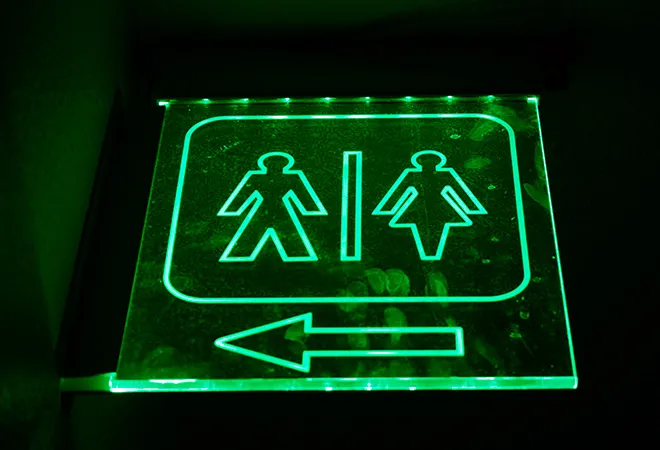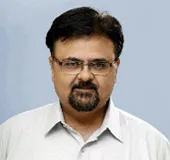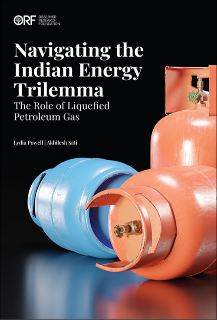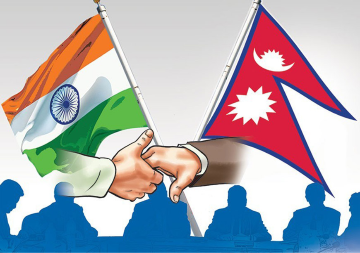
In 2011, when Jeremy Clarkson, the presenter of BBC’s hit auto show, Top Gear, lampooned the state of sanitation in India by driving around prime cities in his lavatory-fitted Jaguar, the show attracted widespread condemnation. Clarkson was accused of being racist by disgruntled Indians from around the world, whose fragile sensibilities were hurt by the unexpected and ill-humoured exposé that uncovered India’s repulsive reality. It even led to diplomatic outrage, with the Indian High Commission in London demanding an apology from the BBC for making India the butt of such “
tasteless toilet humour.”
That a large section of India’s population — both rural and urban — is forced to defecate in the open because of the lack of basic sanitation facilities, is a fact, which has become so obvious, that we have become inured to it. So much so, that it disturbs our collective conscience only when a foreigner makes it the focus of global ridicule. Sadly, even this occasional outrage is never focussed on the real issue, never followed by decisive action, as we tend to close our noses and look away, leaving crores of Indians to continue to lead a life of indignity. Prime Minister Narendra Modi’s flagship Swachh Bharat Mission (SBM), has without any doubt seen India make rapid progress since 2014, but we are still a long way from the cherished goal of making the country open defecation-free (ODF). Like its predecessors, the focus of SBM too, is squarely on toilet construction without considering community participation and inculcating a sense of ownership among the users.
That a large section of India’s population — both rural and urban — is forced to defecate in the open because of the lack of basic sanitation facilities, is a fact, which has become so obvious, that we have become inured to it.
The business of toilet construction is booming under the SBM. The target of constructing 72 lakh toilets across the country’s urban areas by October 2019 is expected to be achieved well before the deadline. The
National Sample Survey Office (NSSO) data of 2015-16, however, has revealed that six out of ten toilets built under SBM do not have proper water supply or drainage. While the focus on individual household toilets is indeed commendable, being the only guaranteed and sustainable solution to end open defecation, such glaring omission could end up constructing toilets a solution that could potentially lead to far worse health and hygiene problems in the future. According to a 2016
WaterAid report, 381 million people — a population roughly the size of Western Europe — live in rapidly expanding urban areas, of which, 157 million have no access to proper sanitation. An estimated 41 million of these have no choice but to defecate in the open. Given the unbridled rate of urbanisation, the increasing demand for basic sanitation services is bound to outpace the construction of toilets. Against this backdrop, the rush for construction of public toilets in urban areas — where a vast majority of the shared sanitation facilities operate on pay-per-use model — reveals some startling facts of India’s urban toilet economy.
Grim picture
Figures speak for themselves in India’s most populous city. Census 2011 data revealed that nearly 42 percent of Mumbai’s total population of nearly 1.3 crore, i.e. nearly 55 lakh people, live in slums and are thereby excluded from some of the most basic amenities — including guaranteed access to safe and clean toilets and water. About 20 percent of these i.e. nearly 11 lakh people are the accursed residents of ‘illegal slums’, who, as per the Slum Rehabilitation Authority (SRA) guidelines, have no access to any civic amenity including municipal water or sanitation. They have no other alternative but to either defecate in the open or access the free-to-use MHADA toilets, which, by design, are flimsy load-bearing structures with rudimentary septic tanks that are never de-sludged, with no water or electricity. The remaining 44 lakh residents of ‘notified’ slums are dependent on either these MHADA facilities or ‘pay-per-use’ public toilets or opt for the large community toilets blocks constructed by the Municipal Corporation of Greater Mumbai (MCGM) under its Sanitation Programme (SSP), which work on a ‘family pass system’. The SSP, started by the MCGM in 1997 with initial support of the World Bank, was India’s first participatory and demand-driven approach to sanitation. The toilets built under the SSP were handed over to Community-based Organsations (CBOs) which are registered Public Trusts or Societies formed by representatives of the slum community under an MoU with the MCGM.
An analyses of these two primary models, under which the multi-agency-funded public and community toilets are run, unearths some striking figures in terms of ‘toilet’ money being generated in the city.
Given the unbridled rate of urbanisation, the increasing demand for basic sanitation services is bound to outpace the construction of toilets.
Municipal community toilets & ‘Pay-per-Use’ model
If 30 per cent (at the most conservative estimate) of the notified slum residents use the community toilets run under the municipal Slum Sanitation Programme (SSP), then the total population accessing such facilities by purchasing the monthly family passes comes to around 13.2 lakh. Considering an average of five members per family (passes for toilet use under the SSP are given “per family” irrespective of the number of members), the population of 13.2 lakh users roughly translates into 260,000 pass-holder families. The monthly renewal of the passes range from Rs. 20 (lowest) to Rs. 80-100 (highest) in different slum pockets across the city. Assuming Rs. 40 as the average monthly renewal fee for 260,000 family passes, income generated under the SSP comes to Rs. 1.04 crore month or Rs. 12.5 crore per annum.
The remaining 30.8 lakh residents of the notified slums depend almost entirely on the ‘Pay-per-Use’ public toilets which charge Rs. 3 (minimum) and Rs. 5 (maximum) per use. Thus, even if these 30.8 lakh people use the toilet just once each day (at a minimum of Rs. 3 per use), the revenue generated per day by the ‘Pay-per-Use’ toilets in Mumbai amounts to Rs. 90.24 lakh per day, i.e. Rs. 27.07 crore per month or nearly Rs. 325 crore per annum.
Adding both (revenue generated from pass-holder families and the pay-per-use model), gives you Mumbai’s ‘Toilet Revenue’, which is to the tune of Rs. 337.5 crore per annum. That’s nearly Rs. 1 crore per day being spent by the poorest in the city for the most basic necessity that one normally does not think twice about!
Big money
Anybody who controls a public toilet — especially a pay-and-use facility in a busy neighbourhood — stands to make big money. It is no wonder then that the humanitarian aspect of toilets has been completely eclipsed by political and other vested interests and each stakeholder in the supply chain has become more interested in profiteering from this lucrative “business model,” while the overall quality of service takes a beating. For local politicians, the toilet business helps in extending their sphere of influence over their vote banks. For MCGM and power distribution companies, its good business, as these toilets ensure recovery of commercial water and electricity tariffs. All in all, it gives rise to a dysfunctional mechanism where a CBO would either go bankrupt, or become a beehive of corruption or give in to pressures from vested interests, while “community engagement” — SSP’s fundamental pillar — undergoes constant and irreparable corrosion. The only interest of the user, i.e. to gain assured access to clean and safe sanitation, gets flushed down the drain!
Anybody who controls a public toilet — especially a pay-and-use facility in a busy neighbourhood — stands to make big money. It is no wonder then that the humanitarian aspect of toilets has been completely eclipsed by political and other vested interests and each stakeholder in the supply chain has become more interested in profiteering from this lucrative “business model,” while the overall quality of service takes a beating.
Sanitation deteriorating
As if this wasn’t worse enough, the situation is deteriorating further. Owing to years of neglect and zero maintenance, many of these toilet blocks in Mumbai are now posing a risk to the life and limb of the users. Eleven innocent lives, including those of three children, have been lost in toilet disasters in Mumbai since 2013. While a majority of the deaths have happened because of users drowning in septic tanks following structural collapses, exploding septic tanks which have not been de-sludged for decades, leading to accumulation of methane, have also killed and maimed people. Such inhuman tragedies occurring in Mumbai with almost predictable regularity indicate that they are no longer mishaps — they are systemic crimes — especially given the huge revenues that these toilets collectively make.
Clearly, shared sanitation facilities are falling miserably short in serving the basic needs of the city’s millions of slum dwellers. With improved earnings of individual slum families, education, and rising aspirations for a better quality of life, there is a growing demand for sanitation systems that are more hygienic, efficient and cost effective and especially those that cater to the inevitable privacy of users. The only assured sustainable solution is provision of individual toilets. Though the MCGM announced its One-Home-One-Toilet scheme in September 2015, it has remained merely a populist gimmick. The above valuation of the thriving toilet economy of India’s financial capital conducted by ORF in its report
Jaayein to Jaayein Kahaan. Finding answers to nature’s calls in Maximum City’ released in February 2017, explains why.
The views expressed above belong to the author(s). ORF research and analyses now available on Telegram! Click here to access our curated content — blogs, longforms and interviews.



 In 2011, when Jeremy Clarkson, the presenter of BBC’s hit auto show, Top Gear, lampooned the state of sanitation in India by driving around prime cities in his lavatory-fitted Jaguar, the show attracted widespread condemnation. Clarkson was accused of being racist by disgruntled Indians from around the world, whose fragile sensibilities were hurt by the unexpected and ill-humoured exposé that uncovered India’s repulsive reality. It even led to diplomatic outrage, with the Indian High Commission in London demanding an apology from the BBC for making India the butt of such “
In 2011, when Jeremy Clarkson, the presenter of BBC’s hit auto show, Top Gear, lampooned the state of sanitation in India by driving around prime cities in his lavatory-fitted Jaguar, the show attracted widespread condemnation. Clarkson was accused of being racist by disgruntled Indians from around the world, whose fragile sensibilities were hurt by the unexpected and ill-humoured exposé that uncovered India’s repulsive reality. It even led to diplomatic outrage, with the Indian High Commission in London demanding an apology from the BBC for making India the butt of such “ PREV
PREV


